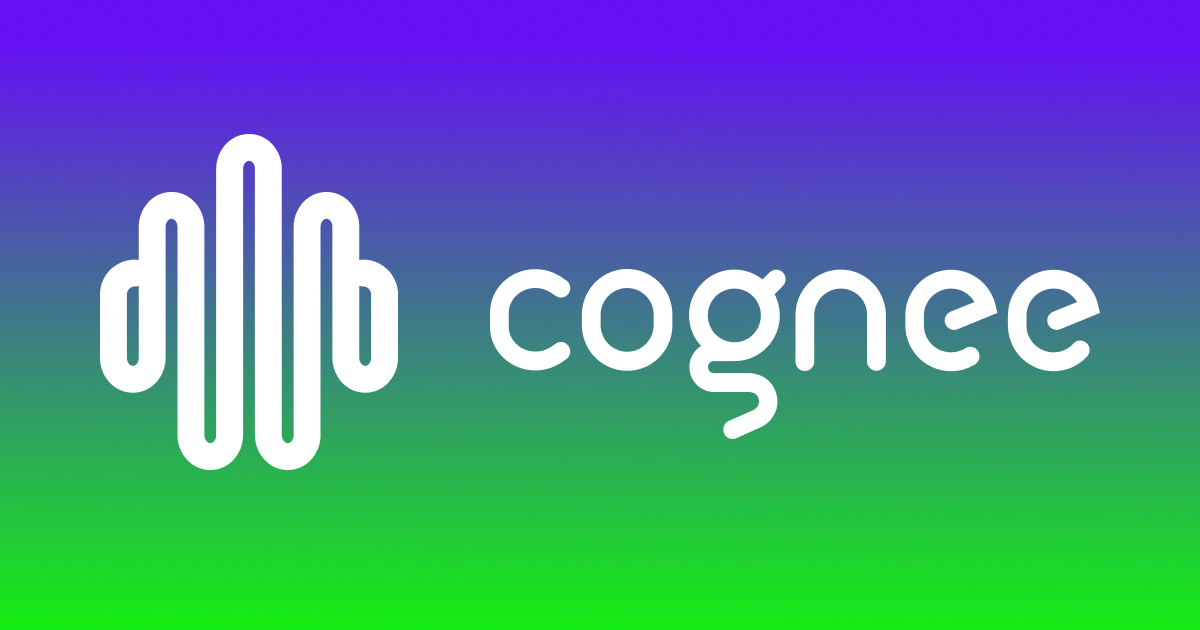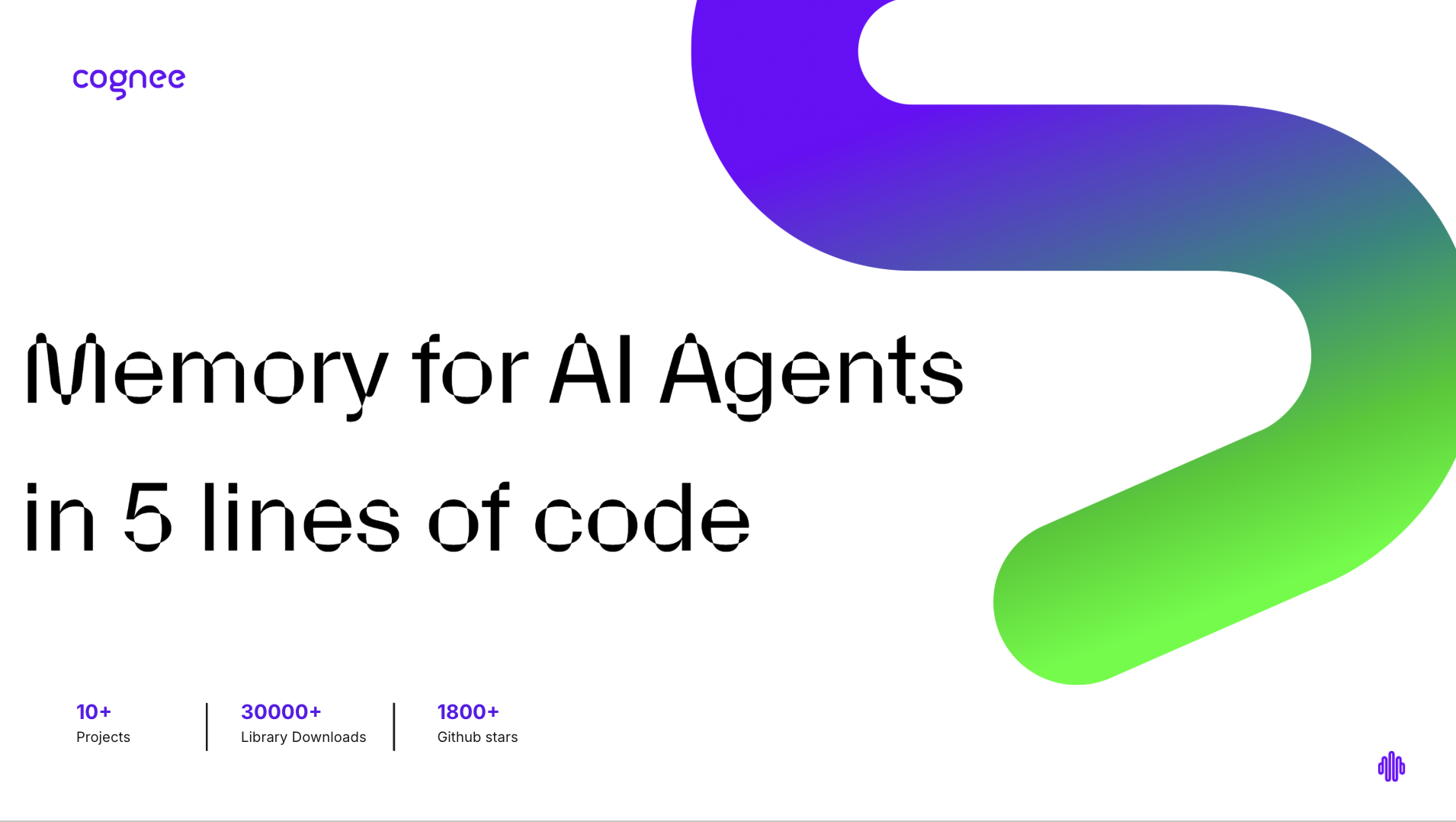
Table of Contents
Overview
In the ever-evolving landscape of AI, context is king. But how do you equip your AI agents with the ability to remember, understand, and respond with true contextual awareness? Enter Cognee, an open-source semantic memory platform designed to supercharge your AI agents with persistent, stateful knowledge. By integrating vector and graph databases, Cognee constructs knowledge graphs that dramatically improve the accuracy and relevance of AI responses. Let’s dive into what makes Cognee a compelling option for developers seeking to elevate their AI applications.
Key Features
Cognee boasts a powerful set of features designed to seamlessly integrate semantic memory into your AI workflows:
- Semantic knowledge graph construction: Cognee automatically builds knowledge graphs from retrieved data, providing a structured representation of information for your AI agents.
- Persistent, stateful memory: Unlike stateless AI models, Cognee provides persistent memory, allowing agents to retain information across sessions and build upon past interactions.
- Supports vector and graph databases: Cognee seamlessly integrates with both vector and graph databases, offering flexibility in how you store and retrieve knowledge.
- AI framework integration (LangChain, LlamaIndex): Cognee is designed to work with popular AI frameworks like LangChain and LlamaIndex, simplifying integration into existing projects.
- Open-source SDK for easy implementation: With its open-source SDK, Cognee offers developers the freedom to customize and extend the platform to meet their specific needs.
How It Works
Cognee’s magic lies in its ability to create and leverage knowledge graphs. The process begins with data retrieval from vector or graph databases. Cognee then uses this data to construct a semantic knowledge graph. This graph provides a structured and interconnected representation of information, enriching AI agents with a deeper understanding of the context. As a result, AI agents powered by Cognee can deliver more context-aware and accurate responses, leading to more meaningful interactions.
Use Cases
Cognee’s ability to enhance AI contextuality makes it a valuable tool across various applications:
- Intelligent chatbots: Improve chatbot accuracy and relevance by providing them with a persistent memory of past conversations and user preferences.
- Financial research assistants: Empower financial professionals with AI assistants that can analyze vast amounts of data and provide context-aware insights.
- Enterprise knowledge search systems: Enhance search accuracy and relevance by leveraging knowledge graphs to understand the relationships between different pieces of information within an organization.
Pros & Cons
Like any tool, Cognee has its strengths and weaknesses. Let’s take a look at the advantages and disadvantages.
Advantages
- Open-source and extensible: Benefit from the flexibility and customizability of an open-source platform.
- Minimal implementation overhead: Cognee is designed for easy integration, minimizing the time and effort required to implement semantic memory.
- Enhances AI contextuality: Dramatically improve the accuracy and relevance of AI responses by providing agents with a deeper understanding of the context.
Disadvantages
- Requires technical setup: Setting up and configuring Cognee requires technical expertise.
- No dedicated UI: Cognee lacks a dedicated user interface, requiring users to interact with the platform through its SDK.
- Relies on data quality: The quality of the knowledge graph is directly dependent on the quality of the data used to build it.
How Does It Compare?
While Cognee offers a unique approach to semantic memory, it’s important to consider how it stacks up against other popular AI tools:
- LangChain: LangChain focuses on chaining together external tools and components to create complex AI applications. While powerful, it doesn’t inherently provide the same level of semantic memory as Cognee.
- LlamaIndex: LlamaIndex specializes in indexing and querying large language models (LLMs). While it can improve information retrieval, it doesn’t offer the same structured knowledge representation as Cognee’s knowledge graphs.
- Weaviate: Weaviate is a vector search engine that excels at finding similar items based on vector embeddings. However, it lacks the semantic layering and knowledge graph construction capabilities of Cognee.
Final Thoughts
Cognee presents a compelling solution for developers seeking to enhance the contextual understanding and response accuracy of their AI agents. Its open-source nature, combined with its ability to construct semantic knowledge graphs, makes it a powerful tool for building more intelligent and engaging AI applications. While it requires some technical expertise to set up, the benefits of improved contextuality and persistent memory make Cognee a worthwhile investment for those looking to take their AI projects to the next level.

